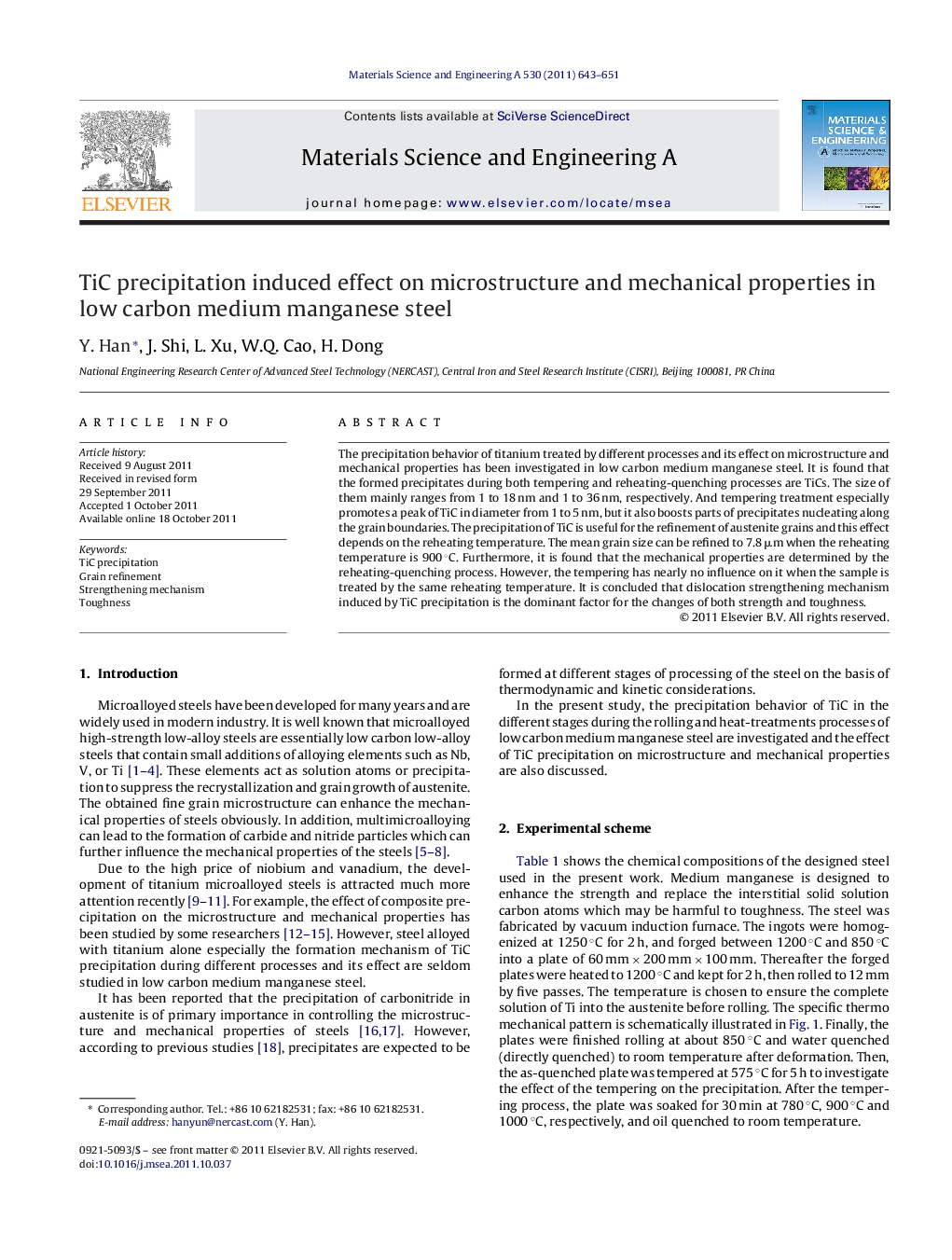| Article ID | Journal | Published Year | Pages | File Type |
|---|---|---|---|---|
| 1578037 | Materials Science and Engineering: A | 2011 | 9 Pages |
The precipitation behavior of titanium treated by different processes and its effect on microstructure and mechanical properties has been investigated in low carbon medium manganese steel. It is found that the formed precipitates during both tempering and reheating-quenching processes are TiCs. The size of them mainly ranges from 1 to 18 nm and 1 to 36 nm, respectively. And tempering treatment especially promotes a peak of TiC in diameter from 1 to 5 nm, but it also boosts parts of precipitates nucleating along the grain boundaries. The precipitation of TiC is useful for the refinement of austenite grains and this effect depends on the reheating temperature. The mean grain size can be refined to 7.8 μm when the reheating temperature is 900 °C. Furthermore, it is found that the mechanical properties are determined by the reheating-quenching process. However, the tempering has nearly no influence on it when the sample is treated by the same reheating temperature. It is concluded that dislocation strengthening mechanism induced by TiC precipitation is the dominant factor for the changes of both strength and toughness.
► TiC mainly precipitates during the tempering and reheating-quenching process. ► TiC precipitation can induce the grain refinement after reheating-quenching process. ► Mechanical properties are determined by the reheating-quenching process. ► Dislocation strengthening is the dominant factor for the mechanical properties. ► TiC precipitation can induce the excellent toughness after reheating process.
